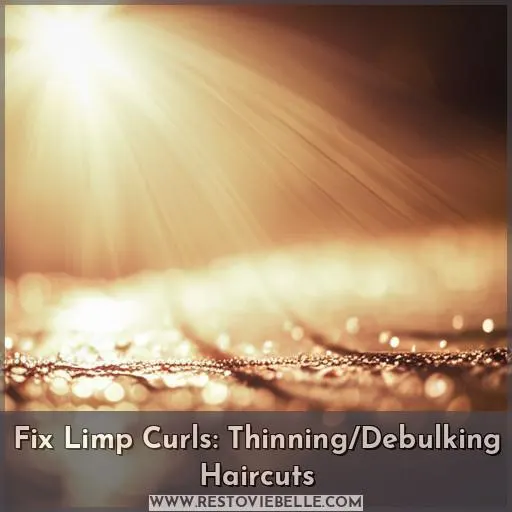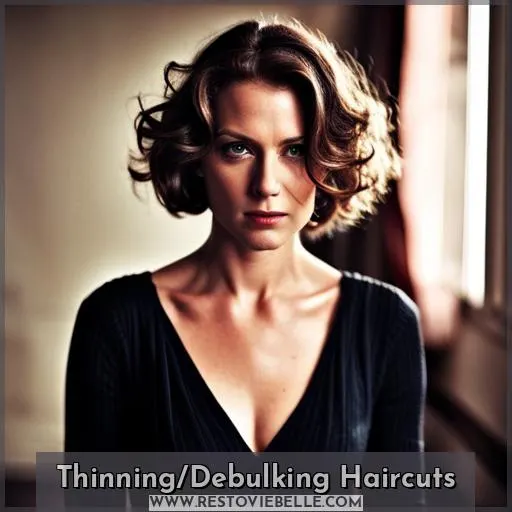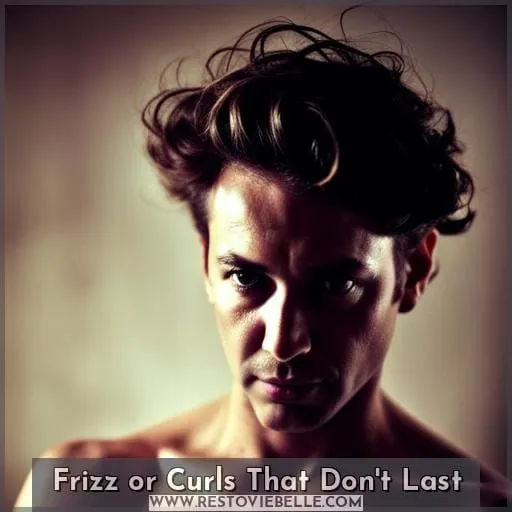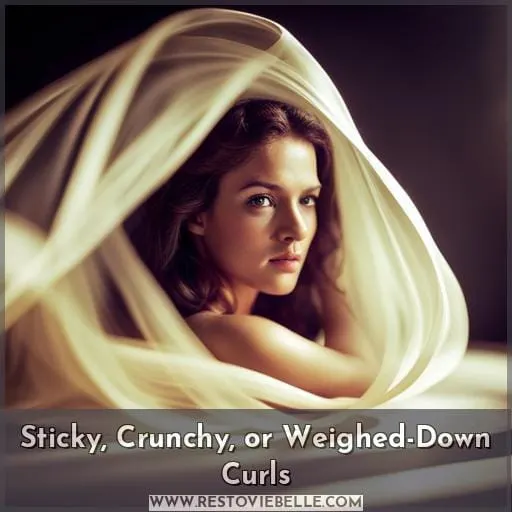This site is supported by our readers. We may earn a commission, at no cost to you, if you purchase through links.
 Are your curls in a crisis? Are they constantly limp and lifeless no matter what you do to them? If you’re longing for luxurious, lively locks, then it’s time to tackle the problem of limp curls.
Are your curls in a crisis? Are they constantly limp and lifeless no matter what you do to them? If you’re longing for luxurious, lively locks, then it’s time to tackle the problem of limp curls.
By understanding why your hair is thinning or debulking and how to prevent this from happening again, you can restore volume and bounce back into your mane.
When our scalp produces too much natural oils or when products build up on our strands without regular cleansing sessions, these factors weigh down our locks causing them to become stringy and lose their volume.
In addition, excessive heat styling as well as hard water deposits all contribute towards weakening curl structures; resulting in fragile frizz-prone strands with limited elasticity – making it harder for us curly girls (and gents!) out there achieve vibrant bouncy ringlets that last longer than an hour!
Table Of Contents
Key Takeaways
- Excessive natural oils and product buildup can lead to limp curls.
- Thinning/debulking haircuts define and shape curls.
- Use low-level humectants or humectant-free products to control frizz.
- Use hard-hold gels for longer-lasting styles.
Thinning/Debulking Haircuts
If your curls are limp, consider getting a thinning/debulking haircut to help define and shape them. Thinning techniques use specialized scissors to remove bulk from the hair and create layers that can give fine hair more texture and volume.
Layered styles with tapered cuts in specific areas can also be used for curl definition while maintaining length. Texturizing methods such as razor cutting or point-cutting are excellent options for those looking to add body without sacrificing their natural curl pattern or texture.
These techniques also allow you to keep an even look throughout the whole head of hair by blending together sections of different lengths into one cohesive style that adds movement and bounce when styled correctly using products designed specifically for curly locks!
By utilizing these haircuts combined with products formulated for your type of curls, you’ll be able to achieve beautiful defined tresses every time!
Humectants and Humidity
By understanding how humectants and humidity can affect your curls, you’ll get a better grip on why those limp locks won’t stay put.
Humectants are ingredients in products that attract moisture from the air to give your hair more definition and curl formation, but they can also contribute to frizz when there is too much moisture in the environment.
High levels of humidity make it difficult for curls to maintain their shape due to excess hydration.
To achieve optimal curl definition while controlling frizz, it’s important that you use styling products with low-level humectant ingredients or no humectants at all if possible.
Balance out moisture with protein treatments and lock down hold using hard-hold gels like Giovanni LA Hold or Raw Curls Firm Hold.
Apply product evenly and scrunch into wet hair before diffusing for volume. Clarify regularly to remove buildup from oils, products, and hard water minerals.
Consider climate when choosing products for protection against heat and humidity.
Moisture Overload Without Protein Balance
Too much moisture without an appropriate balance of protein can lead to limp, soft curls. Protein helps add structure and strength to your strands while also providing hydration for all curl types. Balancing your moisture levels with a protein-boosting product or treatment will help keep curls bouncy and full of life.
Additionally, using styling techniques such as diffusing or air drying carefully can help maintain the right amount of hydration in order to achieve healthy-looking locks that aren’t weighed down by excess moisture overload.
When selecting products for limp curls, it’s important to choose lightweight options that won’t weigh down the hair further but still provide enough hold and definition when styling.
Finally, make sure you’re regularly clarifying away any buildup so nothing gets left behind dragging your precious well-hydrated coils down!
Damaged Hair and Inconsistent Results
Damaged hair, caused by over-styling or using the wrong products, can lead to inconsistent results when trying to achieve defined curls, leaving you frustrated and overwhelmed.
For example, if you were attempting a blowout but had used too much product that day — a common mistake for those with curly hair — you would end up disappointed after hours of styling.
To ensure consistent results time after time, it’s important to follow these steps:
- Develop an appropriate Hair Care Routine.
- Select the right Products for your curl type and climate.
- Consider Humidity Effects when choosing styling techniques.
It’s also important to balance moisture with proteins for healthy strands while avoiding heavy oils, which weigh down curls in humid climates.
Make sure to consider humidity protection when selecting products so that your style stands strong against weather effects like rain or extreme heat!
With these tips in mind, you’ll be able to maintain healthy hair and achieve well-defined, voluminous curls every single time!
Frizz or Curls That Don’t Last
If you’re dealing with frizzy, unpredictable curls that don’t seem to last, it can be frustrating.
- Humidity control and product application are key. Choose lightweight products specifically designed for curly hair and apply them evenly from root to tip.
- Consider diffusing your curls after applying styling products. This will create more volume and help form the perfect curl shape.
- Maintain a protein-moisture balance by using hydrolyzed proteins once a week, in addition to regular moisturizing treatments. Too much moisture alone can leave hair limp and lifeless, while not enough moisture leads to dryness and breakage over time.
- Lastly, if necessary, select hard-hold gels that are suitable for fine or wavy hair. These gels offer a stronger hold, ensuring that your style lasts longer without feeling stiff or sticky throughout the day.
Sticky, Crunchy, or Weighed-Down Curls
If your curls feel weighed down, sticky, or crunchy, it’s time to make a few changes. A good starting point is to look at the products you’re using and switch out any heavy butters, oils, or waxes for lightweight water-based alternatives.
You’ll also want to clarify regularly to combat build-up from silicones and hard water deposits. To keep frizz away in high humidity conditions, opt for products with no humectants like glycerin that can attract moisture and cause curl collapse.
Additionally, consider these tips:
- Use only a small amount of product.
- Scrunch out gel cast when dry.
- Diffuse curls instead of air drying.
- Choose styling products according to climate needs.
- Apply evenly throughout your strands.
With all this advice combined, you’ll be sure to give those limp curls more life than ever before.
Conclusion
Achieve dramatic results with a thinning or debulking haircut! This professional technique is a great way to fix limp curls and give them new life. With a great cut, limp curls can be transformed into dynamic, voluminous curls that’ll have everyone turning heads.
Not only does this method instantly provide volume and movement, but it also helps maintain the integrity of your hair. This is the perfect solution for those looking to give their limp curls a much-needed makeover.
So, don’t let limp curls bring you down – try a thinning or debulking cut for healthy, beautiful curls.












